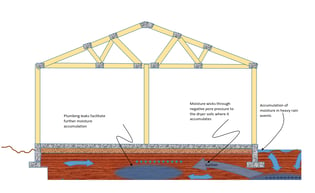Raising a Sunken 300,000sf. Industrial Building 15”
As we started the pre drilling process, we drilled down to 60 feet, the depth of the solid landfill. Afterward, we would install the push piles and drive them to refusal, as we did not know the stiffness of the soil below the landfill. Theoretically, it was supposed to be SGC, the sand, gravel, cobble layer that was deposited by the Salt River over the millennia. This is usually very dense and difficult to penetrate.
We reasoned that this would provide extra assurance. If we installed micropiles we would need to make assumptions about the soil below the landfill as we had no information about it from borings. With a push pile we could simply drive to refusal….. 60,000 pounds.
Some of the piles at first indicated that we were going through rough cobbles. They jerked around and made popping noises as they push through the cobbles. Others however did not. And some went way deeper than we anticipated up to several hundred feet. No one still to this day understands completely what is going on at those depths. We eventually did reach refusal.
Pre drilling for push piles has challenges. The drill has about a minimum distance of 4” away from the wall. While this is OK for when we are working on both sides of the wall to balance eccentric loads, it is not ideal when this is not done as later on we would find out.
Along the truck dock area, the 48” tall dock on the outside, meant that on the inside, the footings would be about 7-8 feet deep creating safety concerns for workers installing piles down in the bottom. We searched for alternatives. On concrete tilt up buildings, the footing is poured and the tilt up walls are placed flat on site and then lifted up with a crane and set on top of the footings. No direct rebar connections go between the footing and the walls above them. This means that any torque placed on the footings from the brackets of retrofit piles would not be constrained by any connections between the footing and the wall above. Therefore brackets must be almost directly under the wall with almost no lateral projections. 4” the distance of the drill was too much.
We discovered that if we opened the dock doors and accessed the outside of the footings from the inside by sticking the drill out the door, we could indeed drill within 1 inch of the tilt wall. This was a great solution to the problem. Later we would discover the limitations of this plan.
Click HERE to read part IV!
Each of the piers was driven to refusal. Some of the pierd first indicated that we were going through rough cobbles. They jerked around and made popping noises as they push through the cobbles. Ultimately, a number of piers went deeper than we anticipated.






